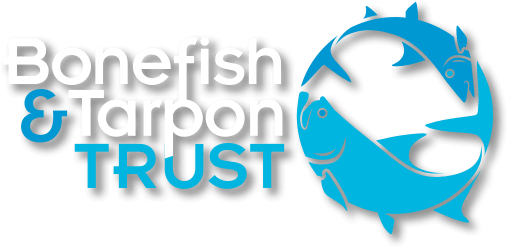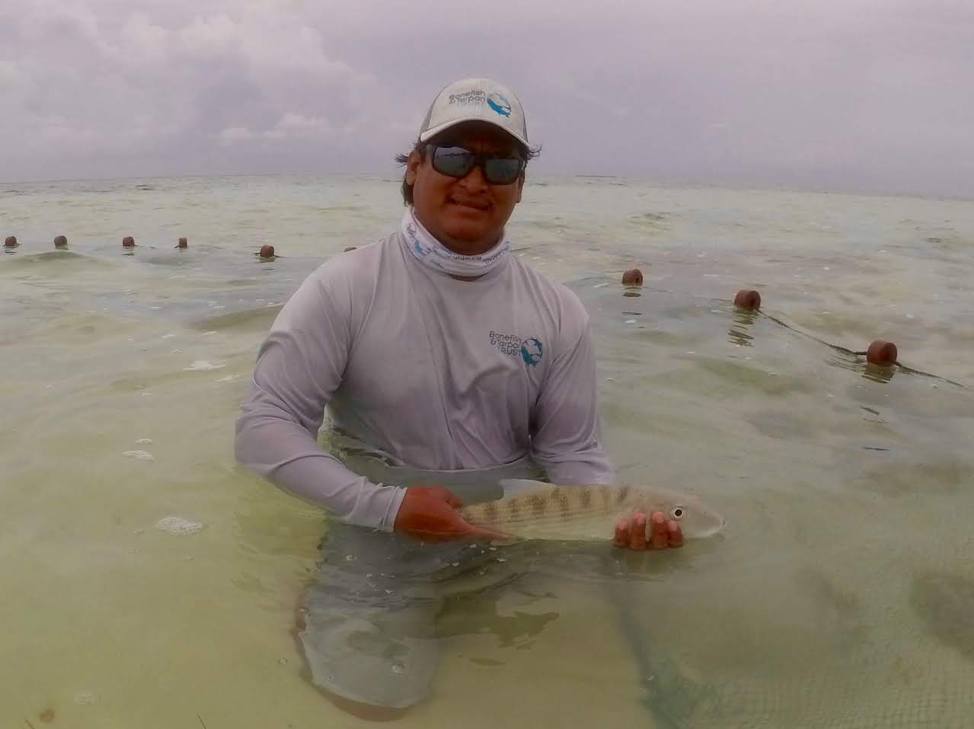In previous blog posts we brought you news on BTT’s Belize-Mexico Program: Dr. Addiel Perez (pictured above) is the new Belize-Mexico Program Coordinator, and he’s been traveling throughout the region conducting interviews to inform BTT’s new strategic plan. You can read those blog posts here and here.
Addiel’s interviews with the many stakeholders of the flats fishery have revealed that the most important need for a new strategy for flats conservation is an overall lack of scientific information to inform management. This includes information on locations of migration routes, pre-spawning and spawning sites, feeding areas, juvenile habitats, and socio-economic information. The lack of information makes conservation difficult on many levels. Without data on the social and cultural dynamics of the fisheries—the flats fishery as well as the other fisheries that share coastal resources—it’s difficult to formulate conservation strategies that allow people to make a living while ensuring fishery sustainability. Among the top items of concern that will benefit from additional information are: habitat conservation and protection (to combat habitat loss and degradation); lack of enforcement (laws and regulations, no matter how well-conceived, are of little use if there are systemic problems with enforcement); overharvest (how can Belize’s coastal habitats support multiple fisheries?).
We’ll tackle each of these in posts over the coming weeks, so stay tuned.
Fisheries Diversity and Harvest
Throughout Mexico and Belize, there are diverse fisheries. The artisanal fisheries are important in this region and are both for subsistence and commercial (that is, to obtain basic life needs such as housing and education) purposes. Unfortunately, the artisanal fisheries use gillnets as the primary fishing gear. This is in response to tourism demand for local seafood, and low abundance of primary target fishes, such as snappers and groupers, which requires gear with a higher catch rate.
Unfortunately, even in the most skilled hands, gillnets are indiscriminate killers—in addition to targeted species, they kill many other species. Depending on where the nets are set, the amount of bycatch (non-targeted species) can vary from low to very high. This is one reason that laws in Belize restrict where gillnets can be set (they can’t be set near a river mouth, for example). Sadly, these laws are rarely enforced (see our next post on enforcement for more details).
But even with proper placement and tending of gillnets, bonefish, tarpon, and permit are regularly harvested. Gillnets can be highly effective, harvesting entire schools of fish. For example, years ago a gillnet was used to harvest bonefish from a flat in central Belize. There are still no bonefish on this flat, years later.
Overall, gillnets are too effective, which negatively impacts fisheries in the long term. Not only is there bycatch of other species, the gillnets catch all sizes of fish, so even juveniles can be harvested. This takes away from the next generation of fish, which further damages the fishery. It becomes a downward spiral. It’s important to remember, however, that it is not only gillnets that can result in such overfishing—overfishing can occur from the uncontrolled use of any gear, whether nets or hook and line.
Even as the impacts of gillnets on fisheries are becoming better understood and regulations to curb their use are being considered, it’s important to consider that people rely on gillnets to feed their families and to make a living and have done so for many years. So even as we work to remove this gear from fisheries, we have to first consider the livelihoods and futures of these fishermen and those who depend on them. The flats fishery of Belize and Mexico are an important social, economic, and cultural component of this region, but we also have to remember that they are a part of a much broader social dynamic.
Coastal Development, Habitat Loss
Just as with gillnets, present regulations pertaining to mangrove clearing and other development impacts are not enforced regardless of existing laws that protect habitats in Belize. The most important thing to remember about habitat loss is that habitat loss can’t be undone. Even in locations where damaged habitat can be restored, it is very expensive and often not entirely effective. And since the population size of most fish species is related to the amount of available habitat, as habitat is lost the maximum size of the fish population decreases. In other words, less habitat means fewer fish. This is why BTT prioritizes habitat conservation as a top item of concern.
In contrast, overfishing can be corrected by reducing the amount of harvest. It can be undone. But even this requires enforceable regulations and an effective enforcement strategy.
Healthy Habitat = Healthy Fisheries
Enforcement
The overall lack of enforcement of fisheries regulations is not unique to Belize. Lack of enforcement is a major issue throughout the region. In Belize, it is rare that gillnets are checked for licenses. And the restrictions on locations where gillnets can be set is not enforced. For example, nets are regularly set across river mouths and on the flats. More concerning is the high level of illegal netting activity that goes unenforced—this is activity by fishermen who don’t have a license to use a gillnet.
Sadly, lack of enforcement is all too common, whether of fisheries laws or coastal development. A short boat ride will reveal numerous sites of unpermitted development along Belize’s coast, for example, frequently including clear-cutting of mangroves.
Thus, priority should be placed on repairing the systemic lack of enforcement. Only then will changing of laws, such as the banning gillnets, be effective. Even if laws are changed, in the current system, the illegal actors will continue to conduct illegal activities, because the enforcement problem hasn’t been fixed.




